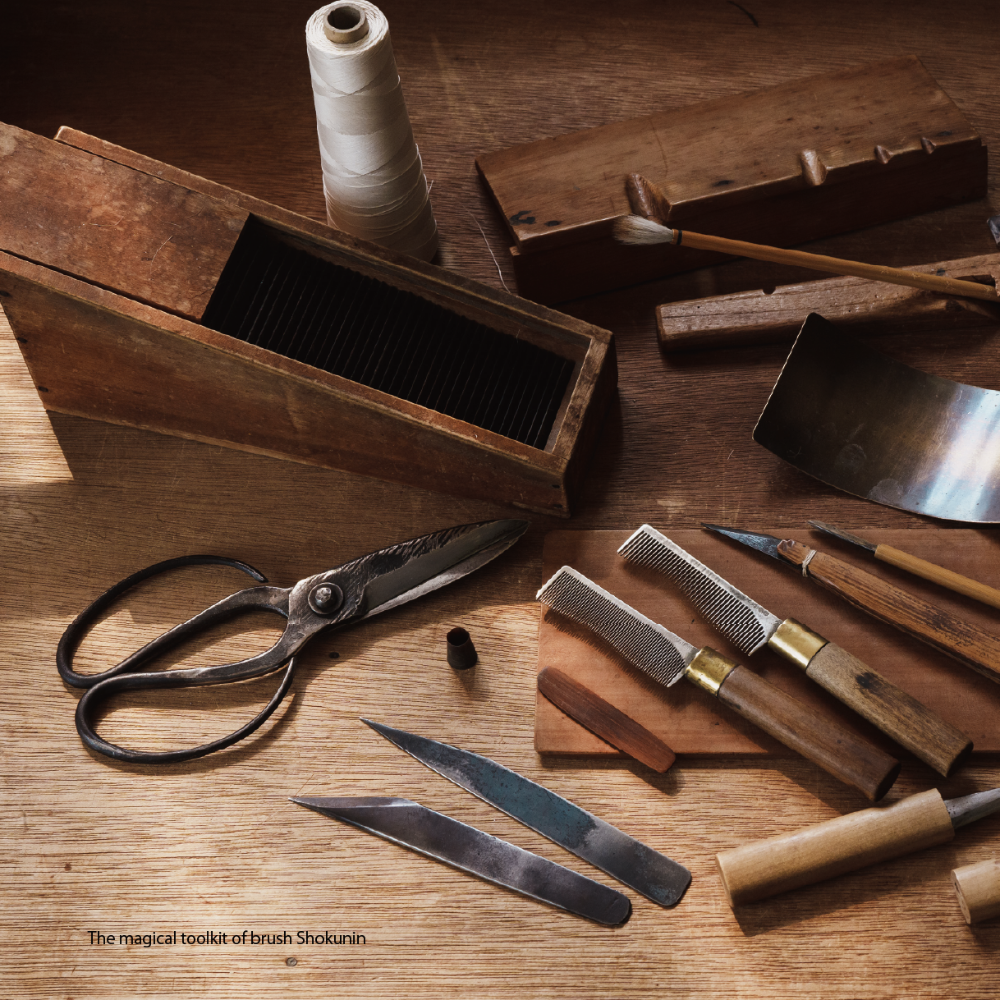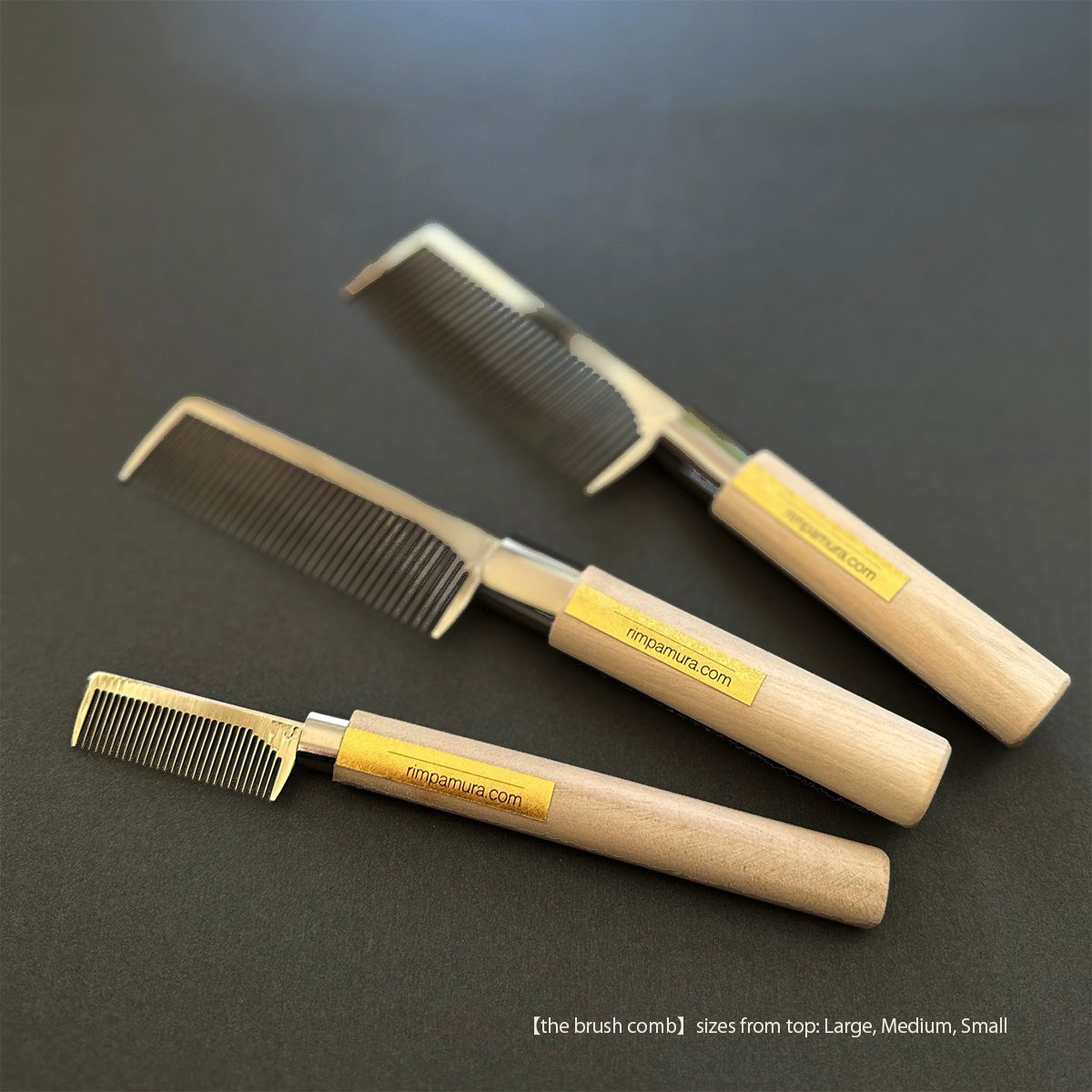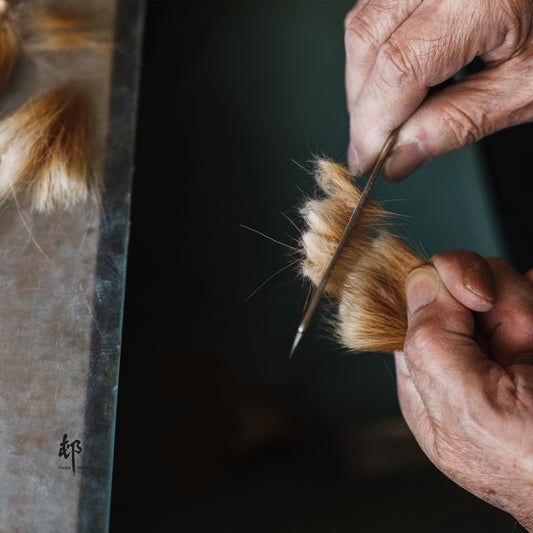rimpamura
A Comb from Brush Comb
A Comb from Brush Comb
The comb, a cherished companion to the Shokunin crafting brushes, is used in crucial processes such as aligning bristle tips and blending overlaid bristles seamlessly. Naturally, the brandnew brushes are meticulously groomed, with each bristle individually adjusted by the comb.
However, through repeated use, the initially straightened bristles gradually twist, and the fresh touch of brandnew brush is often lost. How do you maintain your brushes?
Among the questions frequently received from our customers, one topic stands out: tool maintenance. In conversations with brush shokunin, we learned that straightening the bristles after use can significantly alter the touch of the brush in the next use.
Therefore, we have specially acquired a limited quantity of the brush dedicated comb. While it's possible to substitute other types of combs, having a dedicated tool proves beneficial. The dedicated comb has thin teeth that can smoothly pass through the bristles.
There used to be shokuinin in Japan who produced these combs, but unfortunately, they have all retired, and we are currently dependent on imported products. The shokunin themselves prefer using domestically crafted combs that have worn down teeth, as shown in the photo. However, the product we are offering is a new imported item, so the teeth length is consistent ☺️.
These combs are not widely available in the market, and due to the limited quantity, we kindly request a purchase limit of one per person.
Brush Dedicated Comb (Small Size): 4.9cm × 1.6cm
*Currently, we are offering only the small size, which is ideal for maintaining KASHIN and KASUI. If you desire other sizes, please contact shop@rimpamura.com.
Check out the film below to know how to use it!
https://www.youtube.com/watch?v=QDde_rCYv8I
Couldn't load pickup availability
Share


what's new
View all-

Maki Fude (cored brushes) vs Suihitsu (non-core...
A Makifude has Japanese paper wrapped around its core; therefore, only about one-third of the bristles on a Makifude brush are exposed for use, while the bristles of a Suihitsu...
Maki Fude (cored brushes) vs Suihitsu (non-core...
A Makifude has Japanese paper wrapped around its core; therefore, only about one-third of the bristles on a Makifude brush are exposed for use, while the bristles of a Suihitsu...
-

Two different ways of making brushes
Fude making has been practiced throughout Japan for centuries, and while the manufacturing methods can vary somewhat depending on the region and shokunin, they can be broadly categorized into two...
Two different ways of making brushes
Fude making has been practiced throughout Japan for centuries, and while the manufacturing methods can vary somewhat depending on the region and shokunin, they can be broadly categorized into two...
-

Season of Sumi making is over this year. Sumi i...
The production of sumi ink takes place during winter. This is because one of the raw materials for sumi, Nikawa glue, may not solidify or may even rot when it...
Season of Sumi making is over this year. Sumi i...
The production of sumi ink takes place during winter. This is because one of the raw materials for sumi, Nikawa glue, may not solidify or may even rot when it...
-

Yoichi Hieda awarded at the 47th Yamaguchi Trad...
It is our great pleasure to announce that Yoichi Hieda is awarded the "Japan Crafts Association Yamaguchi Branch Director's Award", the equivalent of the first prize, at the 47th Yamaguchi...
Yoichi Hieda awarded at the 47th Yamaguchi Trad...
It is our great pleasure to announce that Yoichi Hieda is awarded the "Japan Crafts Association Yamaguchi Branch Director's Award", the equivalent of the first prize, at the 47th Yamaguchi...






